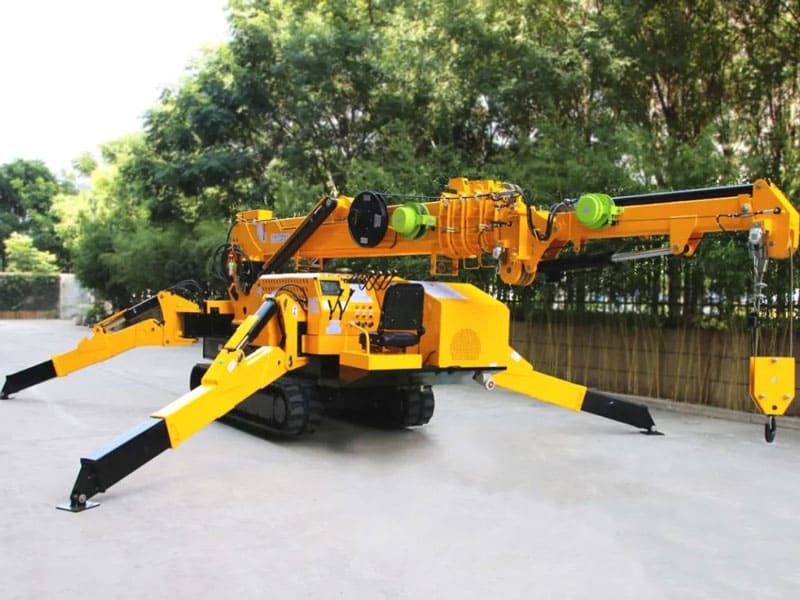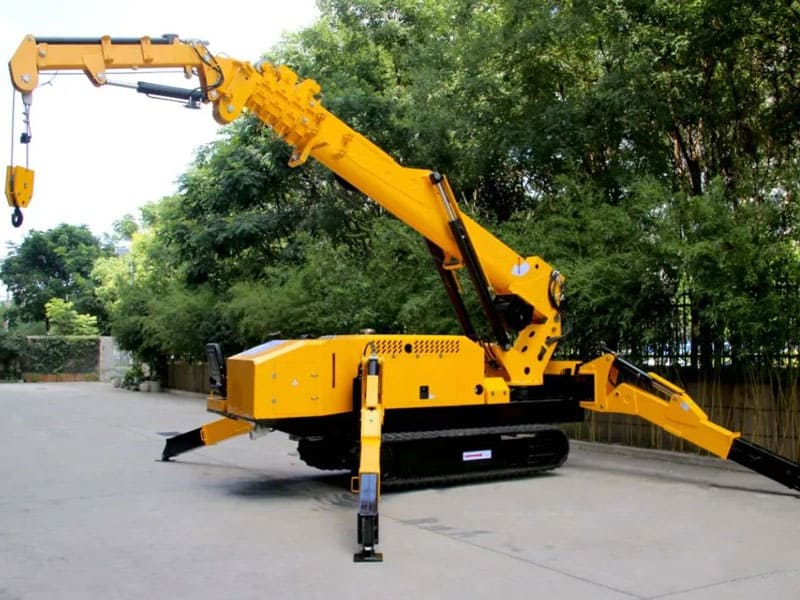Working with spider cranes during rainy days presents unique challenges and safety risks that must be carefully managed. Adhering to specific safety precautions is essential to ensure the safety of both the operators and the equipment.
Weather Assessment: Before commencing any aerial work, it’s crucial to assess the weather conditions. If heavy rain, thunderstorms, or strong winds are forecasted, it’s advisable to postpone the operation. Spider cranes are particularly vulnerable to high winds due to their compact size and high reach, which can lead to instability.
Surface Stability: Ensure that the ground surface is stable and not waterlogged or slippery. Spider cranes require a firm, level surface to operate safely. Wet or muddy conditions can compromise the stability of the crane, increasing the risk of tipping. Use stabilizers and outriggers appropriately, and consider using additional ground mats or supports to enhance stability.
Equipment Inspection: Inspect the spider crane thoroughly before use, paying special attention to the electrical components and control systems. Ensure that all parts are in good working condition and that any exposed electrical connections are properly sealed to prevent water ingress, which could lead to malfunctions or electrical hazards.


Operator Safety: Operators should wear appropriate personal protective equipment (PPE), including non-slip boots and rain-resistant clothing. Additionally, ensure that operators are fully trained in handling the crane under wet conditions, as rain can reduce visibility and increase the risk of errors.
Load Management: Be mindful of the crane’s load capacity, particularly in wet conditions, where the crane’s stability could be compromised. Avoid lifting heavy loads that could exacerbate the crane's instability.
Reduced Speed: Operate the crane at reduced speeds to minimize the risk of slipping or tipping. Rain can make surfaces slippery, so it’s essential to handle the crane with extra caution.
Emergency Preparedness: Have an emergency plan in place, including a clear procedure for safely shutting down the crane and evacuating the area if conditions worsen.
In conclusion, working with spider cranes in rainy weather requires careful planning, constant vigilance, and adherence to safety protocols. By taking these precautions, you can significantly reduce the risks associated with aerial work in adverse weather conditions.
Post time: Aug-28-2024









